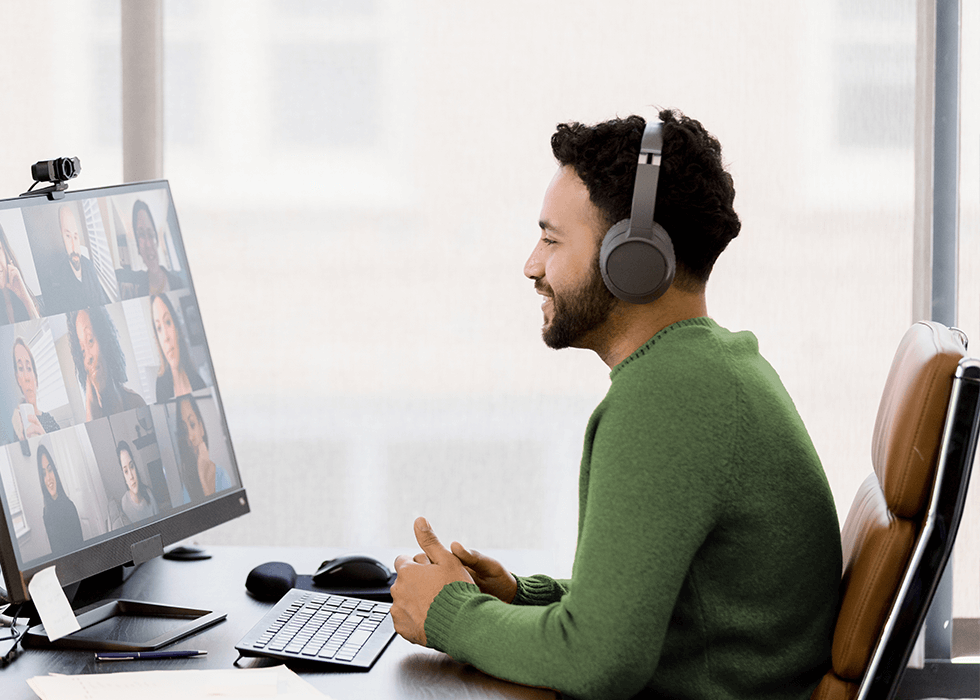News & Trends
Live Streaming: What It Is and Why Your Organization Needs It
Most organizations today understand the power of video. Savvy markets, however, are discovering the enormous potential for growth offered by livestreaming. It can increase customer engagement, reach a larger audience, and provide a more interactive experience than traditional written and video content. It can also help businesses create meaningful connections with their customers, develop new revenue streams, and increase brand awareness.
But before you dive into livestreaming your events, here's a primer on the most recent history and technology of streaming.
Netflix did not invent binge-watching, but it took this practice mainstream in 2013 when it added multiple seasons of premium cable series to its streaming movie library and simultaneously released all episodes of its original programming. This was a game-changer for the streaming giant because it didn't rely on advertising revenue to sustain it and didn't need to string viewers along with one episode a week as the traditional network TV model has. Subscriptions soared.
Streaming as a technology, though, has been around since the 90s. From 2000 to 2010, it began to grow using Macromedia Flash, which Youtube and other platforms relied on to deliver their content. Cable companies in the mid-2000s started tapping a cache of movies and past episodes of popular original series from premium services like HBO and Showtime, but delivery could often be slow, and because your TV was tethered to your wall with coaxial, it could hardly be called streaming!
Streaming technology began to take off when the MPEG-DASH standard was created in 2012. YouTube and other video streaming platforms transitioned from Flash to HTML5 using this standard, and with online streaming as a proof of concept, the video streaming market expanded rapidly to TV, smartphones, and other devices.
What Is Streaming?
It's 2023, and you're asking that? Here's the technical answer: Streaming refers to the continuous transmission of video and audio files from a server to a client. A compressed form of the content is sent over the internet and displayed by the viewer in real time. Streaming media is sent continuously and played as it arrives. Or simply put, streaming is a process that allows users to view or listen to online content without downloading the files first. We've always been able to consume media from the internet in some way or another, but back in the day, it was more challenging than it is now. Usually, huge files had to be slowly downloaded to a hard drive that was likely bursting at the seams with previously downloaded content.
This is played out somewhat dramatically in the Netflix series The Playlist. Developers have just created Spotify, a music streaming service that doesn't require a peer-to-peer network or downloading files. This tech is common today, but it seemed like sorcery when P2P applications were the only option.
How Does Streaming Work?
Now, that's a great question! Streaming works by disassembling the data from a video or audio file and then recomposing it in a way that any given device can read. If you like binge-watching science fiction, the process is similar in theory to what happens when Scotty beams up Captain Kirk. But that's an oversimplification.
Content streams start with a prerecorded media file on a remote server. That would be Captain Kirk. When a server receives a client request (Beam me up, Scotty), the file is compressed and sent to the client device in tiny pieces called data packets using a transmission protocol like Transmission Control Protocol (TCP) or User Datagram Protocol (UDP). After receiving the data packets, a video player on the user's end decompresses the data and interprets the video and audio. Once played, the video files are automatically deleted.
What's Needed to Stream Content?
Modern desktop computers, laptops, smartphones, tablets, and smart TVs are designed to receive streaming content. And because livestreaming has become so popular, multiple third-party platforms that do the heavy lifting for companies that livestream their content are abundant, offering storage and editing capabilities and the bandwidth to steam. It should also be noted that some social media platforms provide robust livestreaming features as well.
However, high-speed internet connectivity is the key to upstream and downstream because users will likely encounter buffering without it. Buffering loads a portion of the stream's content before continuous streaming begins and continues throughout the video or audio. On a fast connection, all this happens quickly, and we don't notice it. But a slower connection makes buffering obvious as the content struggles to load and then keep up with what has already loaded. This translates into repeated temporary pauses in the streaming or a blurry video experience as your streaming player automatically adjusts the stream quality.
My Internet Company Keeps Complaining About My Bandwidth Usage. Should I Worry?
Ah! Here's another potential hindrance to successful streaming: Bandwidth throttling. Sometimes a less-than-stellar streaming experience isn't the fault of the streaming service, the device it's being streamed to, or the amount of speed you pay your internet provider to have.
Some Internet Service Providers (ISP) intentionally slow down their customers if they exceed a predetermined amount of usage in a predetermined time. This is called "throttling," a way to regulate network traffic to minimize congestion and the use of available bandwidth.
Picture this: You've gotten too binge-happy with Game of Thrones and Better Call Saul, and suddenly you get a lot of lag on your stream. Your provider may be intentionally slowing your connection. The bad news is there's no way to stop internet throttling because you're likely contractually bound to it. Complaining that you spend $100 monthly for a fast connection won't get you out of throttle jail. Some ISPs claim they don't throttle, though, so if you're experiencing this, switching providers is the most effective way forward.
Still, sometimes connections will experience slowness because everyone else on the network uses it simultaneously at a high capacity. For the more technically minded, using a VPN is the primary way many consumers (especially businesses) avoid loss of connectivity during peak hours.
But content streaming is much more than just entertainment—much more.
LEARN HOW LIVESTREAMING CAN BUILD YOUR BRAND AND INCREASE YOUR CONVERSIONS. JOIN THE CONVERSATION ON AVIXA'S XCHANGE.














